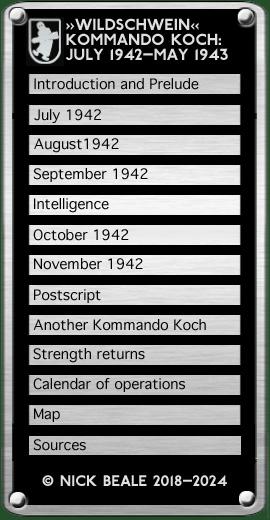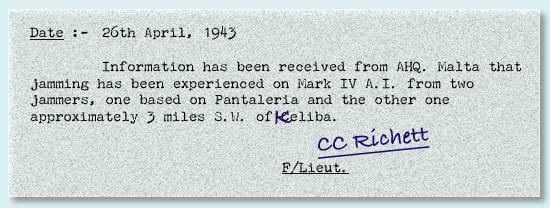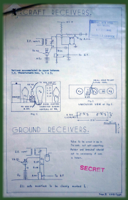|
Malta’s worries about jamming were certainly not over in November since the station at Noto continued two types of transmission against ASV These were described on the 12th as a carrier “deeply modulated” at either 100 Hz or 1000 Hz, both usually accompanied by “a heavy noise component”. On 1 December, Air Vice-Marshal Keith Park was warning the Air Ministry that Caruso had been discarded and that the “much more effective type known as Protekt … may be fitted to large numbers of aircraft”. Therefore he considered it “essential to provide immediately means of intercepting Protekt aircraft (modified GCI set and homing sets for two Beaufighters)”. In addition he wanted to complete the furnishing of Malta’s radar stations with anti-jamming equipment. Malta was able to report four days later that 70 ASV sorties had been sent against predetermined targets between 3 October and 12 November; 40 aircraft had “found” and of none of the failures could be attributed to jamming. A Wellington of No. 59 squadron had reported interference on the night of 12/13 November but, in the terse language of RAF signals: “no known evidence jamming interfering torpedo strikes”. On Christmas Day 1942, the island’s AA defences had experienced jamming of their GL (gun-laying) sets and this was still being reported, albeit “very infrequently” at the end of January 1943. On the night of 5 February, Wellington ‘U’ of No. 221 Squadron encountered jamming in the area of Marettimo (42 km west of Trapani, Sicily) and the following night, ‘V’ of the same unit was 25 km from Marettimo when it met “complete jamming on both aerials, mainly portside but obliterating both sides”. By 9 February, “one Mark IV A.I. Beaufighter held by 89 Squadron” had been equipped to home on airborne jammers operating against Malta’s Chain Overseas Low stations. The same day it was proposed that a Wellington Mk. VIII should be reserved for investigation of the Marettimo interference, something which recurred on the 14th, prompting the observation that “it certainly makes more difficult the task of detecting shipping coast crawling from Palermo to Trapani”. The converted Wellington Mk. VIII was due to make its first investigative sortie that night and it detected two distinct ASV jamming signals. On 20 February, Sgt. J.G. Low aboard Beaufort ‘L’ of No. 39 Squadron reported interference “all over screen … but blips received through same.” when 11 km NW Trapani. By 25 February, the Operational Research Section had concluded that Marettimo was the probable source of the jamming and that Noto was still active but “there is no evidence of jammers on the Tunisian side of the strait”. Further, “from the data available it is not possible to state how much, if any, of the jamming emanated from airborne sources”. Following an Air Ministry enquiry, on 3 March AHQ Malta reported that: ASV jamming was experienced in the Trapani Marittimo [sic] area on night 5/6 and in the Trapani area on night 20/21 February. ASV jamming log sheets will be sent to D[irector] of RDF by hand of Wing Commander Bower within first week of March. Message ends. A jamming transmission affecting Had-Dingli COL, Malta began on the night of 25/26 March and was still in progress when the month ended; it had also been picked up on ASV. The intensity was “not very great” and bearings suggested that the source was Pantelleria. By 26 April, Malta was reporting two jammers affecting AI Mk. IV, on Pantelleria and 5 km SW of Kelibia, Tunisia but within three weeks the Axis forces in North Africa had surrendered to the Allies. continued on next page …
|
|||



